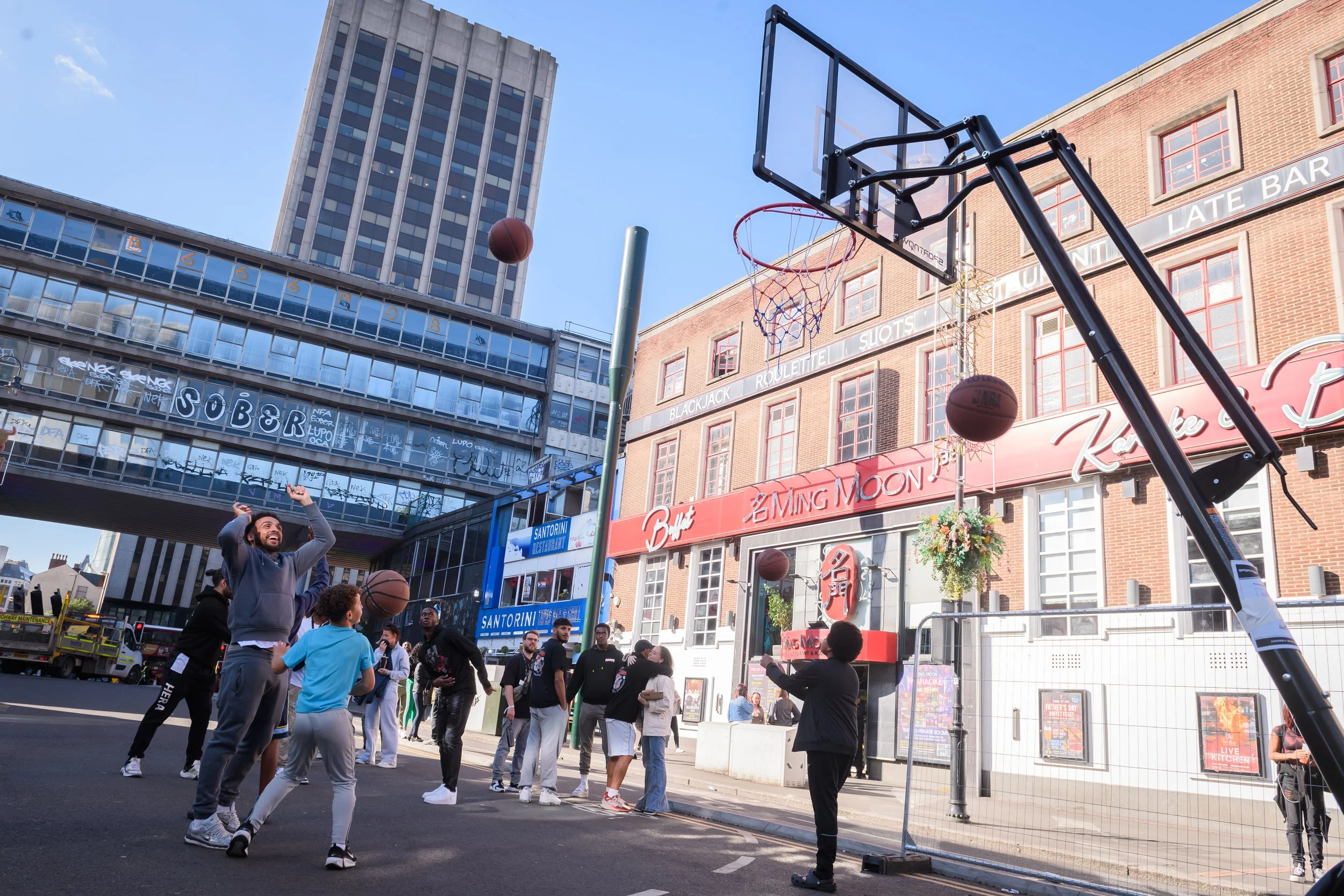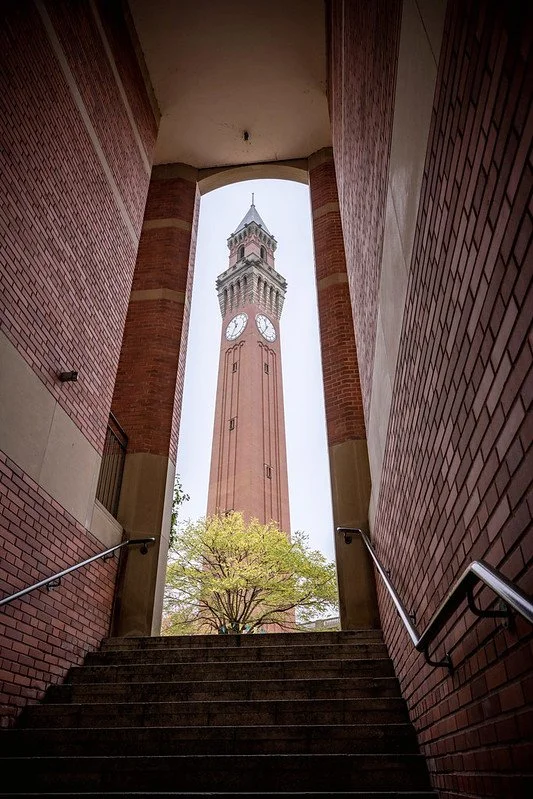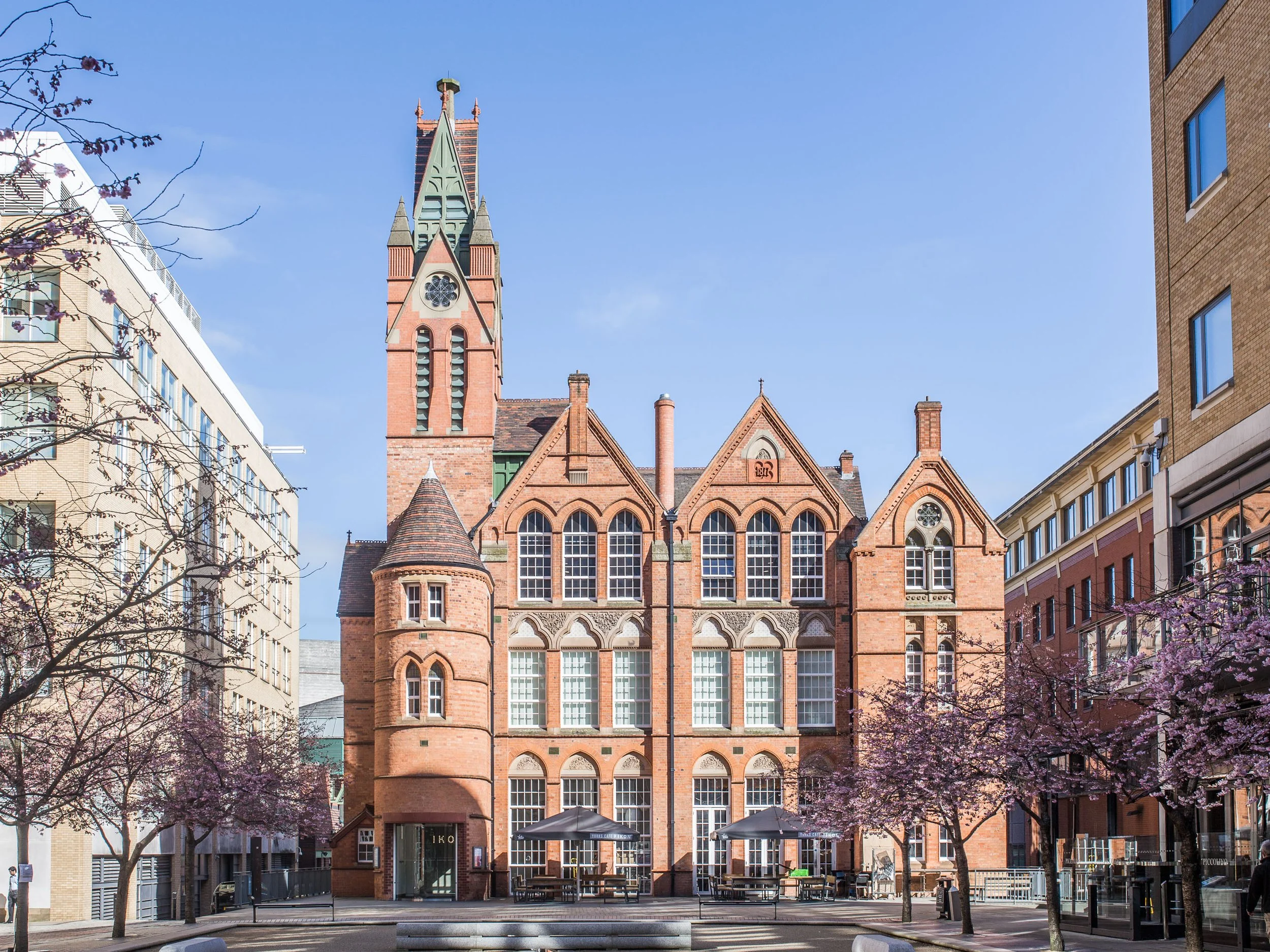Pillar 6: Magnets & Moonshots
In this final pillar, City Magnets is our spotlight on the extraordinary strengths our city has in some key areas of culture and how we can build on these through tailored programmes, targeted support and better promotion. After this, our final part of the strategic framework, also includes a small number of ‘moonshot’ ideas that represent a pipeline of future ‘investible propositions’ for culture and the arts in Birmingham.
City Magnets
Craft (inc. Jewellery)
The ‘City of 1000 trades’ is known for its industrial heritage and exceptional craftsmanship, particularly in its Jewellery Quarter, a district steeped in history and artistry. Located just a short distance from the city centre, the Jewellery Quarter is a hub of creativity and one of Birmingham’s most celebrated areas for craft and design. It is home to over 100 independent specialist retailers and workshops, making it one of Europe’s largest concentrations of jewellery businesses. It produces an estimated 40% of all the jewellery made in the UK including a pair of bejewelled heels worn on stage by Beyoncé.
At its heart lies the Museum of the Jewellery Quarter, which offers an insightful journey into the area’s history. The museum, housed in a perfectly preserved workshop, showcases the traditional tools and techniques used by local craftsmen for decades.
There are plans emerging from Colmore Business District to launch a Birmingham Jewellery Biennial as a month-long celebration of the artistry, heritage, and innovation within the realm of jewellery. It would include a programme of jewellery fairs, markets, workshops, pop-up exhibitions, heritage tours, open studios, parties, seminars, street dressing and projects in partnership with local organisations.
Birmingham boasts a rich crafting heritage, with artisans excelling in areas like leatherworking, ceramics, and glassmaking. The Custard Factory in Digbeth, another creative hotspot, features a mix of craft shops and independent makers showcasing everything from handmade furniture to art prints.
Dance
At the heart of Birmingham’s dance community is the prestigious Birmingham Royal Ballet (BRB). One of the UK’s leading classical ballet companies, the BRB has a rich history dating back to its establishment in 1931 as the Vic-Wells Ballet (later the Sadler’s Wells Royal Ballet) before relocating to Birmingham in 1990. The move to the city signified a new chapter for the company, which has since flourished under the leadership of renowned artistic directors like Sir Peter Wright, David Bintley, and currently Carlos Acosta.
Beyond classical ballet, Birmingham’s dance scene is celebrated for its diversity. The city’s multicultural identity has fostered a vibrant blend of dance traditions, including South Asian dance forms such as Kathak and Bharatanatyam, often showcased by organisations like Sampad, which promotes South Asian arts. The city is also home to contemporary dance companies like Fabric, based at the Birmingham Hippodrome, and to Birmingham Dance Hub, one of two national hubs for dance outside of London.
Credit: Joe Bailey
Food
Food culture is a unique feature of Birmingham and our economic analysis for this framework has shown that there is an above average percentage of people working in the food and dining sector in Birmingham – food is clearly part of the city’s DNA.
Global flavours abound across the city from the famous Balti Triangle to specialisms in Middle Eastern cuisine, Polish and Chinese food, as great independents celebrated in events like Digbeth Dining Club. And then with more Michelin stars than anywhere outside London, if you want to go high end, you won’t struggle in Birmingham.
Literature
Another of the city’s standout cultural strands, there is a strong literary scene and an incredibly rich heritage of writers and writing in the city. The city has been home to literary icons such as J.R.R. Tolkien, whose early life in Birmingham inspired the lush landscapes of The Lord of the Rings. Plans to celebrate this legacy include a feasibility study into developing a Tolkien-inspired attraction or festival, which could position Birmingham as a global hub for fantasy literature enthusiasts.
Other writers from Birmingham include Samuel Johnson, WH Auden, David Lodge, Liz Berry, Malala Yousafzai and Benjamin Zephaniah.
Modern Birmingham thrives as a hub for diverse and innovative literary expression. The city’s spoken word scene is particularly dynamic, with festivals like the Verve Poetry Festival showcasing established and emerging talent. Additionally, events like UniSlam bring together university slam poetry teams from across the UK, offering a platform for young voices to address pressing social issues with creativity and passion. There is also, of course, the Birmingham Literature Festival itself bringing writers together in the city.
Writing West Midlands continues to champion the city’s literary ambitions, fostering talent and collaboration through events, workshops, and mentoring programmes. Their vision for Birmingham underscores its potential as a national literary leader.
The Birmingham Stories project, a collaboration between the National Literacy Trust and the University of Birmingham, exemplifies the city’s commitment to promoting literacy. Its innovative initiatives, such as story exchanges and the Making Home exhibition, emphasise the transformative power of storytelling, particularly among young people and diverse communities.
Music
Birmingham’s rich and diverse musical heritage is known for its eclectic contribution to the UK music scene, spanning genres from classical to heavy metal, reggae to electronic. The city is widely seen as the birthplace of heavy metal, with iconic bands such as Black Sabbath, Judas Priest, and Led Zeppelin emerging from its industrial roots. Similarly, the city played a pivotal role in the ska and reggae movements during the 1970s.
Fast forward to today and Birmingham is still very much a musical city. A cornerstone of its cultural life is the Royal Birmingham Conservatoire, a world class institution providing exceptional training for the musicians, actors, stage managers and performers of the future. Another acclaimed example is the City of Birmingham Symphony Orchestra (CBSO). Renowned globally for its innovative work, the CBSO blends tradition with modernity, offering performances that push the boundaries of classical music. It has become a beacon of artistic excellence, showcasing Birmingham's role in the global orchestral landscape and regularly taking the brand of Birmingham out to the world while on tour. It has a particular commitment to making orchestral music relevant to younger generations.
B:Music, the charity behind Symphony Hall and Town Hall, plays a vital role in the city’s cultural heartbeat. These venues host a wide array of performances, from classical to contemporary, fostering a rich and accessible music scene for residents and visitors alike.
The forthcoming Birmingham Music Archive highlights the city's legendary contributions, celebrating homegrown talents such as Black Sabbath, UB40, and Duran Duran. It solidifies Birmingham’s reputation as a birthplace of iconic bands and genres.
In May 2025, the BEAST FEaST Festival at the University of Birmingham will underscore the city’s leadership in electroacoustic music. This global gathering features pioneers like Otto Sidharta and Myriam Boucher, utilising the revolutionary BEAST (Birmingham ElectroAcoustic Sound Theatre) system to create hyper-immersive soundscapes.
There’s still room for development here however, and some interviewees consulted for this framework have suggested the city’s music ecosystem needs a dedicated body to champion the sector and help to bridge gaps between education, grassroots performances and the commercial sector.
Credit: Will Pace
Credit: Andrew Fox
Theatre
Taking to the stage is a pretty natural occurrence in Birmingham as it is home to rich drama and theatre productions. The Birmingham Hippodrome is a cornerstone of the city’s cultural life. Known for hosting West End productions, opera, ballet, and pantomime, it attracts audiences from across the region.
The Birmingham Repertory Theatre (The REP), with its storied history, is a hub for contemporary drama and new writing, showcasing innovative productions that often go on to tour nationally.
For those seeking intimate or experimental performances, there’s the pub and theatre that is The Old Joint Stock Theatre and The Crescent Theatre that provide a platform for emerging talent and fringe works. Additionally, the city’s rich diversity is reflected in the programming at community-focused spaces like The Drum Arts Centre, which celebrates multicultural stories and voices.
Topping the list of future plans for this part of the cultural offer of the city is the Hippodrome’s emerging plan (detailed below) to establish the International Centre for Musical Theatre.
Credit: Greg Milner The Cast of Hansel and Gretel
Visual arts
Central to the visual arts in Birmingham is the Ikon Gallery, celebrating a 60th birthday in 2024 and standing tall in the contemporary art world as an internationally acclaimed venue that showcases art across a wide range of mediums, from painting to performance art. Its innovative exhibitions attract global and local talent, making it a hub for artistic exploration and another of the city’s cultural assets that takes Birmingham’s brand out to the world. It continues to do work with Birmingham's global majority populations, with the educational sector and has ambitious future plans.
Also vital is the newly (and partially) re-opened Birmingham Museum and Art Gallery (BMAG), home to one of the finest collections of Pre-Raphaelite art in the world. BMAG also curates exhibitions that highlight regional artists and historical works, offering a dialogue between the past and present.
Complementing these institutions are numerous smaller galleries like Eastside Projects and Centrala, which champion experimental and community-focused art. There is also the Barber Institute of Fine Arts, recognised as an innovative world class collection that is free to visit and enduringly popular. Other important outlets include Grand Union, Vivid Projects and STRYX.
The city thrives with grassroots initiatives and artist-run spaces, fostering collaboration among emerging talents. Public art is another key feature soon to be boosted with a new Public Art Strategy. Birmingham has landmarks such as Antony Gormley’s Iron:Man, Gillian Wearing’s ‘A Real Birmingham Family’ and the ever-changing street art in Digbeth. The annual Birmingham Open Studios further emphasises the community’s creative pulse, inviting visitors to explore artists’ workshops.
Birmingham’s visual arts scene is not only about celebrating creativity but also about challenging perceptions and engaging diverse audiences. One key area for future development is street art, and the potential to launch a street art festival, aligned to the aspirations in our Public Art Strategy.
Credit: Handover Agency
Industrial heritage
With – famously – more canals than Venice, you’d expect the heritage of Birmingham’s pivotal role in the Industrial Revolution to be of critical cultural and tourism importance. And Birmingham’s canal network does indeed play a really active role in city culture (see box). We also have heritage attractions like the Back to Backs, Birmingham Science Museum and the beautiful Aston Hall.
Canals as Canvas
Moonshots
This Framework sets out an agenda for the next ten years for Birmingham but also comes hard on the heels of the Commonwealth Games, which put our city centre stage. We want to work to make 2022 the launchpad for even greater things – in our new ten year strategy for culture and the arts we also want to include a pipeline of big ideas, investible propositions and left-field concepts that could fuel our continued cultural success. As this is a dynamic framework that will be (gently!) refreshed each year, this list may change but for the 2025 launch edition of the framework we have identified four moonshot projects to develop through our Cultural Compact.
Pillar 6: Action Areas



















